Log in or create new account to save this product to your wishlist.
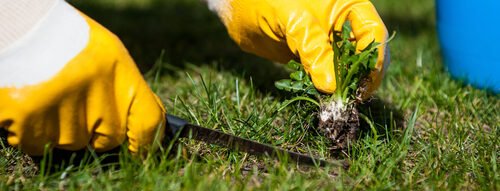
Remove, control, and prevent lawn weeds
If you have a garden, there’s no avoiding it: lawn weeds will inevitably grow.
🌱 All important maintenance moments for your lawn during the year. Leave your email and we will send you the lawn calendar for free.
Enter your email
Receive the lawn calendar in the mail
Enjoy a green lawn all year round!

- Order by 2PM = shipped today
- 250.000+ satisfied customers!
- 60 day satisfaction guarantee
Weeds weaken your lawn because they zap up the nutrients in the soil. So, a weedy lawn is likely to be an unhealthy one. And unhealthy lawns are prone to disease and less resistant to drought.
So, while weed killing is hardly the most glamorous of garden tasks, we must do it. But lots of us worry that we’re going to kill off the wrong plants. And if you don’t remove the roots, they’ll just grow right back.
Our tips on removing, controlling, and preventing lawn weeds will help you identify and kill off the hardiest of weeds so that your lawn has the space and nutrients it needs to thrive.
Weed control: know what you are removing
Before you get started, you must know what kind of lawn weeds you are going to remove.
We distinguish between root weeds and seed weeds.
Carrot weed
Carrot weed (Daucus corota) is a perennial plant with deep, extensive root networks – sometimes, the roots can be metres-long. This makes the weeds difficult to remove.
Wild carrot weed has upright, fern-like leaves, similar to other intrusive weeds like parsley dropwort. The plant produces tall stems, topped with delicate white flowers, bunched tightly in umbels.
The weed root produces a carrot-like tuber (which can be edible but is likely too tough to enjoy). However, carrot weed looks similar to hemlock, which is deadly if eaten. If in doubt, avoid!
If you pull the top off the carrot weed, the “carrot” breaks off, forming more complex roots, and the plant will spread. Read on for tips on eradicating this root weed from your lawn.
Examples of other root weeds are thistles, nettles, bindweed, horsetail, cultivated grass, and ground elder.
Seed weed
Seed weeds are often annual plants that spread through seeds, often distributed by the wind or bird droppings.
Seed weed plants produce seed in large numbers. Examples of these types of weeds are dandelion, elder, thistle, hairy bud herb, daisy, common ground herb, annual meadow grass, shepherd’s purse and birthwort.
15 ways to remove and control lawn weeds
There are several ways to remove or control lawn weeds. Here, we’re going to give you 16 top tips to clear your lawn of invasive species.
(V) = environmentally friendly tip
-
Weeding (V)
Removing weeds by hand is the most efficient way to remove invasive plants. Hand weeding gives you control over what you remove and helps you avoid damage to other plants.
When you weed by hand, it’s only effective if you pull the whole plant out of the ground, including the roots.
It is a time-consuming job but can be very effective.
It is not wise to weed when rain is coming because any weeds that haven’t been wholly removed will grow back faster. Weed your lawn in dry weather; that way, any remaining weeds struggle to survive.
-
Hoeing weeds (V)
Hoeing is a quick method of removing lawn weeds. The hoe helps you loosen the weeds beneath the soil.
However, hoeing can do more harm than good with root weeds because the hoe might only cut off the roots, leaving pieces of the root intact underground. Any root remaining will come back with a new plant.
Hoeing is most suitable for seed weeds, as the roots are shallower in the soil.
-
Remove lawn weeds using a tool (V)
You can use various types of tools to get rid of weeds. Use a root cutter or thistle cutter to remove weeds, roots and all.
Additionally, root cutters usually come with a long handle, meaning that you don’t have to bend down to access the roots. So, this method is advisable if you struggle with a bad back.
You can loosen and remove seed weeds with a hoe, chopper, or cultivator.
Weeds growing between the cracks of your patio tiles can be difficult to remove as it’s difficult to access the roots. Use a grout scrapWeeer or grout brush to remove the weeds in this case. Be careful not to damage your patio tiles. Not all tiles can withstand steel wire.
-
Removing weeds with machines (V)
If you’re trying to remove weeds from between the cracks of a large patio, getting down on your hands and knees with a grout scraper can be back breaking after a while.
You can use an electric weed sweeper to remove both weeds and moss from your concrete without using harsh chemicals and pesticides.
You see quick results with a weed sweeper, and it’s better for the environment than chemical treatments.
-
Removing lawn weeds by scarifying (V)
Dethatching your lawn removes the moss and dead organic matter from between your grass plants, both of which suffocate your lawn.
Scarifying will initially make your lawn look worse, but your grass grows back vigorously and recovers within a couple of weeks.
Think of scarifying as mowing vertically to give the grass more room to develop. Find out more about scarifying here.
-
Fighting weeds with a gas burner (V)
Weed burners are easy to use, are ecologically sound and ergonomically friendly.
Most gas-powered weed heaters are butane-powered, available in the same type of canister you might use for a camping stove.
Weed burners work by heating the leaves of the weeds, which causes the plant’s cells to burst. This makes them dry out and die.
You might need to repeat the process over the space of a few weeks to get rid of the weeds completely, but this is a minor hassle as weed burning is good fun!
-
Fighting weeds with an electric weed burner (V)
Electric-powered weed burners do precisely the same as their gas-powered counterparts, but you don’t have to deal with gas bottles.
Electrically-powered burners work a little like big hairdryers and require a power cable, so you’ll need an extension lead if you have a large garden (or opt for gas).
Gas-powered weed burning uses a flame that can be quicker than the dry, hot air approach offered with an electric burner.
Either way, weed burners are better for the environment than chemicals.
-
Weed control with an organic ground cover (V)
Give those suffocating weeds a taste of their own medicine.
Smother them with a layer of mulch, such as grass clippings, compost, or coconut shells. This will suffocate seed weeds, and they’ll die off.
And the organic covering will break down and feed the soil. Win-win.
Alternatively, you could plant attractive ground cover plants like Lily of the Valley or Creeping Thyme. Seed weeds, in particular, will struggle to survive in competition with these more beautiful choices.
-
Fight weeds with plastic (V)
For a longer term approach, cover the affected ground with thick, black plastic. Most bin bags are too thin and are likely to pierce over time, so you’ll need to buy an approved black plastic weed barrier.
Everything underneath the plastic will die from a lack of sunlight. But give this approach plenty of time: the plastic must remain in place for at least 3 to 6 months.
Remember that EVERYTHING beneath the plastic will die – that includes your grass, so reserve this method only if you’re going to reseed or renovate.
-
Remove weeds with boiling water (V)
Not many people know about this method, and it’s surprising because it’s so easy and inexpensive.
Pour boiling water over the plants, and the heat will destroy the proteins in the most stubborn of weeds; ultimately, killing off the plant.
However, this method won’t necessarily eradicate the roots, so you may need to use this approach several times before the plant loses strength and dies.
-
Weed control with salt
It might surprise you to discover it, but most garden plants can’t withstand exposure to salt. So – to get rid of weeds – a saline solution is effective.
However, you need to be careful when applying the saline solution because this approach could also kill off the plants around those pesky weeds.
Mix one-part salt with eight-parts water, add a little dishwashing soap and add the mix to a spray bottle. And then spray directly onto the leaves of the weeds.
Tip: Avoid spraying intensely into the soil; otherwise, neighbouring plants could die. Also, the saline solution may stain patio tiles, so bear this in mind when applying.
-
Weed control with bicarb
Another home-garden-and-kitchen remedy: bicarbonate of soda.
Mix 5 tablespoons of soda in a bucket of hot water. For precise application, pour it into a plant sprayer.
The same applies here: be careful when using to protect neighbouring plants.
You can also sprinkle the baking soda directly onto the weed: moisten the weeds with a hose on a mist setting, and sprinkle one teaspoon of baking soda over the foliage of the entire week (not just in the centre). Water well to activate, and allow it to soak into the soil.
-
Weed control with white vinegar
Cleaning vinegar is an effective weed killer that you can use diluted or undiluted – it’s so acidic that weeds die quickly.
This method isn’t advised if your soil is prone to acidity. Acid soil inhibits your lawn’s growth and could actually make your weed population stronger because many weeds enjoy acid soil (such as horsetail or moss).
Use a sprayer or watering can, and work in a disciplined manner to avoid spraying neighbouring plants.
Please note: adding salt, vinegar, or baking soda to the soil isn’t always recommended as the environmental impact isn’t always clear. If you’re looking to maintain your green credentials, choose an approved environmentally-friendly approach (indicated in this article with (V)).
-
Fighting lawn weeds with natural pesticides (V)
Herbicides are chemicals that kill weeds, while pesticides help eliminate garden pests by poisoning or burning their target. But some pesticides are also approved for weed killing.
However, many pesticides contain harmful chemicals and aren’t considered environmentally sound.
Natural pesticides, however, dissolve after a couple of hours so that you can plant or sow again the same day. Use a pressure sprayer to apply and read the instructions carefully.
Even though the pesticide in use might be safe for most plants, you should still wear protective clothing to minimise contact.
-
Control weeds with chemicals
We can buy over-the-counter weed killers in the UK, and we’re free to use those in our gardens. However, some weed killers are designed to be used only by licensed professionals. Make sure you read the label because you could be breaking the law and find yourself with a fine (and a weedy lawn).
If your lawn weeds are exceptionally hardy and are more difficult to kill than those pesky walkers in The Walking Dead, then you should call in a professional who will safely blitz those weeds once and for all.
7 tips for effective lawn weed control
So, you know how to control your weeds. Here are seven more tips for getting started.
Tip 1: good preparation is half the battle
Determine what kind of weeds you are going to remove, and choose how you’re going to go about it. Mow your lawn a few days before using weed killer for the best results.
Tip 2: take the season into account
The best season to remove lawn weeds is in the spring or early summer when the soil is still slightly moist, and weeds are actively growing.
Tip 3: avoid breezy days
If you use weed killer, do this at a time when there is little or no wind. The wind can disperse the weed killer, and – before you know it – your treasured plants have gone for a burton.
Tip 4: separate weeds from good plants
Make sure you don’t attack the wrong plants. Cover good plants with plastic or work very specifically with a plant sprayer, pressure sprayer, or watering can.
Tip 5: prevent back pain
Back pain is a common setback (lousy pun intended) with manual weed removal. Take care of yourself: wear knee pads, and kneel to prevent damaging your back.
Step 6: Protect your new lawn
If your lawn is less than six months old, you should choose a weed killer especially formulated for young lawns.
Tip 7: protect your pets
If you use pesticides on your lawn, prevent your pets from making contact with the grass for at least a day.
Preventing lawn weeds
Once you’ve tackled the weeds in your lawn, it’s vital that you know how to prevent them from coming back.
Use the following tips for a beautiful, weed-free garden.
Tip 1: New garden?
Before sowing grass seed or transferring plants into the soil, make the garden as free of weeds as possible. Start with a blank canvas, and it’ll be easier to prevent weeds in the future.
Tip 2: Create a dense turf
Create a dense turf by overseeding, especially in bald spots. A thick turf doesn’t give weeds the space they need to grow.
Tip 3: Scarify your lawn.
Like all plants, grassroots need oxygen. Aerate your lawn once a year.
Tip 4: Mow regularly and do not cut too short.
This helps the grass form a better barrier against future lawn weeds. Keep at least 3cm in length for ornamental lawns and 4cm for shady and play lawn.
Tip 5: Your turf also needs nutrition.
This nutrition comes in the form of manure or lawn feed. Fertilise your lawn 3 to 4 times a year for best results.
Tip 6: Remove weeds
Remove annual weeds before they flower heads turn to seed.
Tip 7: Improve the pH value of your soil
The ideal pH value for your turf is 5.5 – 6.5. If your soil is more acid, sprinkle lime. Acid-loving weeds, such as moss, don’t like this at all.
Tip 8: Make use of a mulch layer
A mulch layer of, for example, grass clippings, garden waste, compost, or wood chips prevents and reduces the growth of weeds. Read our tips for mulching.
Tip 9: Are you installing a terrace or driveway?
Place a weed barrier cloth underneath the tiles. This means that weeds are less likely to grow between the tiles.
Everything you need to know about weeds
We hope these tips can get you started. If you want to know more about weeds, read Everything you need to know about weeds, take a look at all our other articles
Check out our range of grass seed, fertilisers, scarifying products, and accessories for a beautiful lawn and garden.
If you have any questions, we’re here to help! Get in touch, and we’ll be pleased to help you.
-
Lawn Edges: Cutting, Mowing & Maintenance TipsFind out why maintaining lawn edges is important. How to cut and mow them. Check out our handy tips for the perfect lawn edging maintenance.Read more
-
Identifying and controlling millet in your lawnMillet is an edible crop, loved for its edible, highly nutritious grain. However, you may find millet in your lawn, spread through bird droppings. Find out how to identify and control millet in your lawn.Read more
-
Identifying Common Garden Weeds in the UK: A Comprehensive GuideWeeds can be a nightmare. Or they might be a blessing. This article will help you decide!Read more
-
How to Get Rid of Weeds in Your GardenRemoving weeds from your garden doesn't have to be a struggle. Explore effective control and prevention techniques for a carefree green space.Read more
-
Weed grasses in your lawn: how to identify & get rid of them?Weed grasses weaken the resistance of your lawn, causing bald spots and diseases. The general advice is: act quick! Read on for the lowdown.Read more
-
Common garden weeds: can I eat them?Weeding is probably the most hated of all garden chores. But – actually – you might be culling a superfood that grows without any attention at all.Read more
-
How to Beautify Your Lawn with Garden LimeImprove your lawn with lawn lime for the right soil structure and nutrients. Everything you need to know about spreading lime for a healthy lawn.Read more
-
How to get rid of moss: THE Lawn Moss Killer Guide of 2023Lawn moss killer is your essential weapon in fighting invasive moss that can kill your lawn. Find out when and how to use lawn moss killer.Read more
Leave a comment
Your answer will be displayed on the site and the interested party will be notified by email.
Leave a comment
Have a question or want to share your experience? Leave us a comment.

- Order by 2PM = shipped today
- 250.000+ satisfied customers!
- 60 day satisfaction guarantee

- Order by 2PM = shipped today
- 250.000+ satisfied customers!
- 60 day satisfaction guarantee

🌱 All important maintenance moments for your lawn during the year. Leave your email and we will send you the lawn calendar for free.
Enter your email
Receive the lawn calendar in the mail
Enjoy a green lawn all year round!



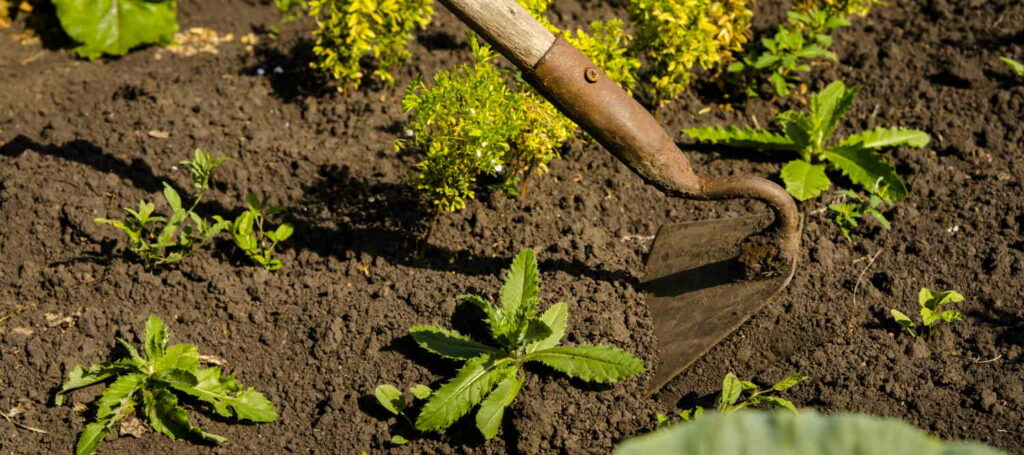

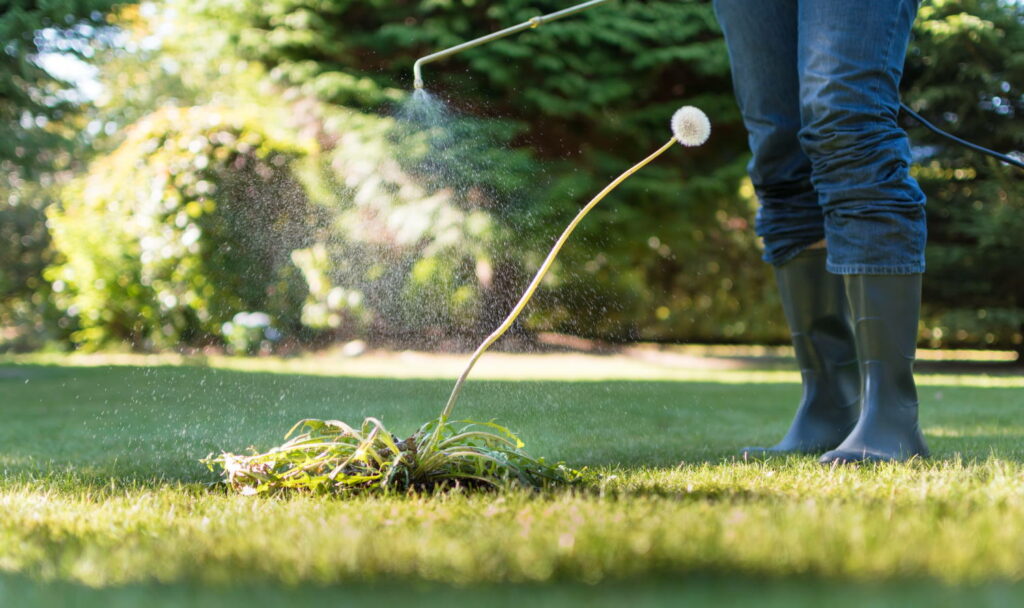



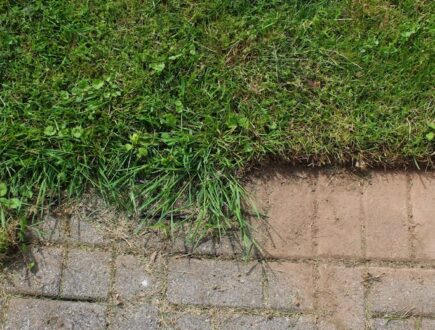
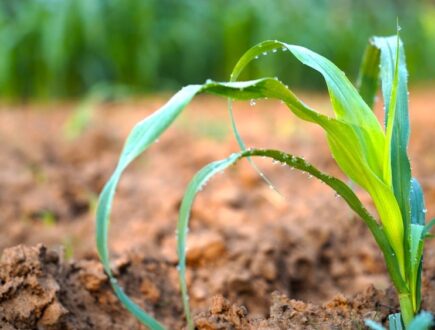
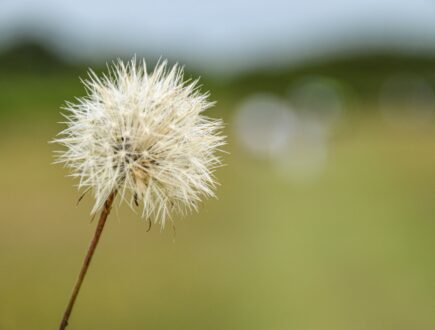
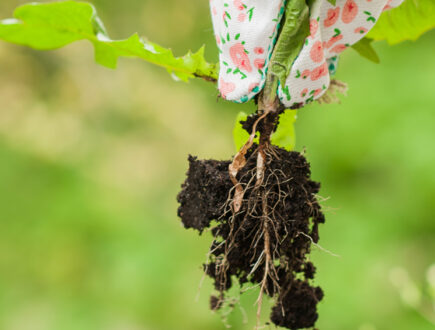













Comments (0)
There are no comments yet. Well then, what are you waiting for to
Be the first to write your comment!inaugurate this pretty page?
Do you have some comments?